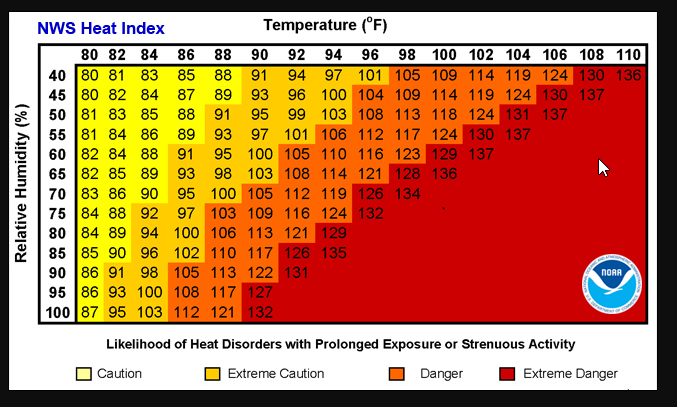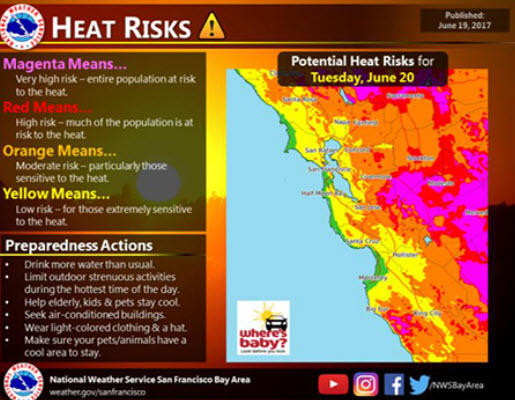Summer’s heat isn’t likely to diminish any time soon. That’s why it’s best to plan for heat before it starts. With that in mind, employers have to seriously consider the steps they can take to protect workers from heat stress, especially those who work outdoors.
Heat stress is caused by multiple factors and can happen to workers and others in all areas of the country–not only those regions known for record-setting highs.
Humidity, work load, duration, and changes in temperature are just some of the factors that contribute to the likelihood that workers will experience heat stress. We’ll take a closer look at these factors and discuss some tips on how you and your team can avoid heat related illnesses.
#1 Equip Your Team to Understand How Heat Stress Affects Health and Safety
Facts About Heat Stress
Heat stress happens when the body cannot get rid of excess heat. The body’s core temperature rises as a result and with that, the heart rate increases. Workers in several industries, indoors and outdoors, are vulnerable to heat stress, including manufacturing workers, miners, warehouse workers, and bakery workers as well as farmers and construction workers.
Symptoms arise as the body continues to store heat. Concentration and the ability to focus are affected and the person may lose the desire to drink, increasing their vulnerability to illness or death if the person is not cooled down.
High air temperature and radiant heat from the sun or another industrial source contribute to the conditions that create heat stress, indoors or out. A lack of air movement increases the effects of heat, and high relative humidity makes it difficult for the body to cool itself through sweating. The right PPE safety gear can protect workers from the sun and bring relief from the heat.
Stay Alert for Symptoms and Offer First Aid
Heat stress can produce a range of heat related illnesses. An individual’s underlying health can also be a factor in how the body reacts to heat and the particular set of symptoms that arise, however these conditions can strike a worker of any age.
That’s why it’s critically important to understand the symptoms that you may observe in your crew–or yourself–and be on the lookout for any unusual symptoms or changes in performance.
Although the severity of these illnesses differs, an individual may not present milder symptoms before a more severe condition, such as heat stroke, occurs; heat related illness does not necessarily move in stepwise fashion, so the symptoms listed need not appear in a particular order to be considered serious.
The right response at the right time can mean the difference between life and death or prevent heat related illnesses from escalating in severity. Fluids, shelter from sun, and cooling are some of the first steps to take. It’s also important to note that the person suffering from illness should not be left alone.
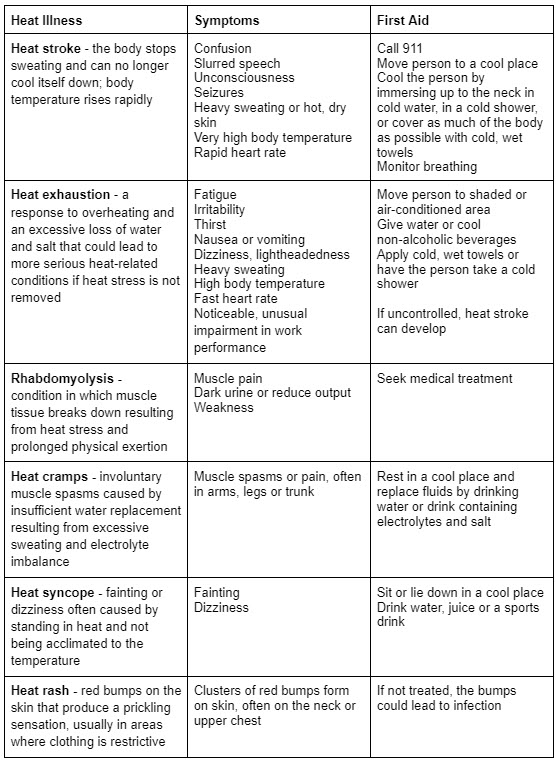
Keep Track of Weather Conditions with Accurate Information
Anticipate and track weather conditions to prepare for periods of excessive heat and prevent injury or illness. The National Weather Service has tools to help you monitor weather patterns so you can better manage heat stress for your workers.
The Heat Index chart offers a way to determine how hot it feels based on a combination of humidity and temperature.
The NWS also offers guidance to help you interpret the patterns you see on regional heat maps, clarifying the color designations and providing direction for necessary precautions.
This resource from the NWS and CDC pulls together the information you need to get a broad look at weather patterns that affect your region as well as the nation. Knowing what heat trends could be headed your way can help guide the way work is scheduled.
#2 Acclimate Workers to Heat Conditions
Gradually Increase Exposure to Heat Conditions
The body takes time to adjust to working in extreme heat. All workers, experienced and new, need to gradually increase exposure during the start of high-heat periods.
NIOSH recommends the following schedule: For workers with previous experience with the job, the acclimatization regimen should be no more than a 50% exposure on day 1, 60% on day 2, 80% on day 3, and 100% on day 4. New workers should increase exposure even more slowly, with no more than a 20% exposure on day 1 and an increase of no more than 20% on each additional day.

Failing to acclimate workers puts them at risk of injury or even death.The majority of heat stress related deaths occur either early in the season or to workers new to the job.
Schedule Wisely to Protect Worker Health
As much as possible, adapt work schedules to avoid heavy work during the hottest part of the day. Workers should be working shorter shifts until they have adapted to the heat.
Water, Rest, and Shade
Employers should provide areas where workers can cool down. Workers should stay hydrated by drinking plenty of cool water, even before they get thirsty, and take regular breaks in sheltered or air conditioned areas out of the heat.
#3 Provide PPE that Cools and Shields
Those who work outdoors are among those at the greatest risk for heat stress. Direct sunlight and high humidity coupled with exertion all contribute to the effects of heat exposure. Employers have the responsibility to provide appropriate heat safety PPE for workers and protect them from heat stress.
Cooling Colors and Shading the Skin
Along with choosing the right PPE, one tip specifically for working outdoors is to wear the right clothing. Cover the skin as much as possible for protection and select light-colored garments made of wicking fibers. Light and high visibility colors reflect the light, keeping workers cooler than dark clothing.
PPE and safety gear can shield workers from the sun with a light-weight layer of protection, such as a neck gaiter, or create shade with protective shields to cover the neck.
Keep the body cool with shade that you can wear, like the HiVizGard™ Hi-Vis Green Fire Retardant Treated Neck Shade, FRNS161G/F. An elastic band attaches this self-extinguishing treated mesh fabric to most hard hats. Trimmed with silver reflective material, this HiVizGard™ neck shade also comes in lime or orange.
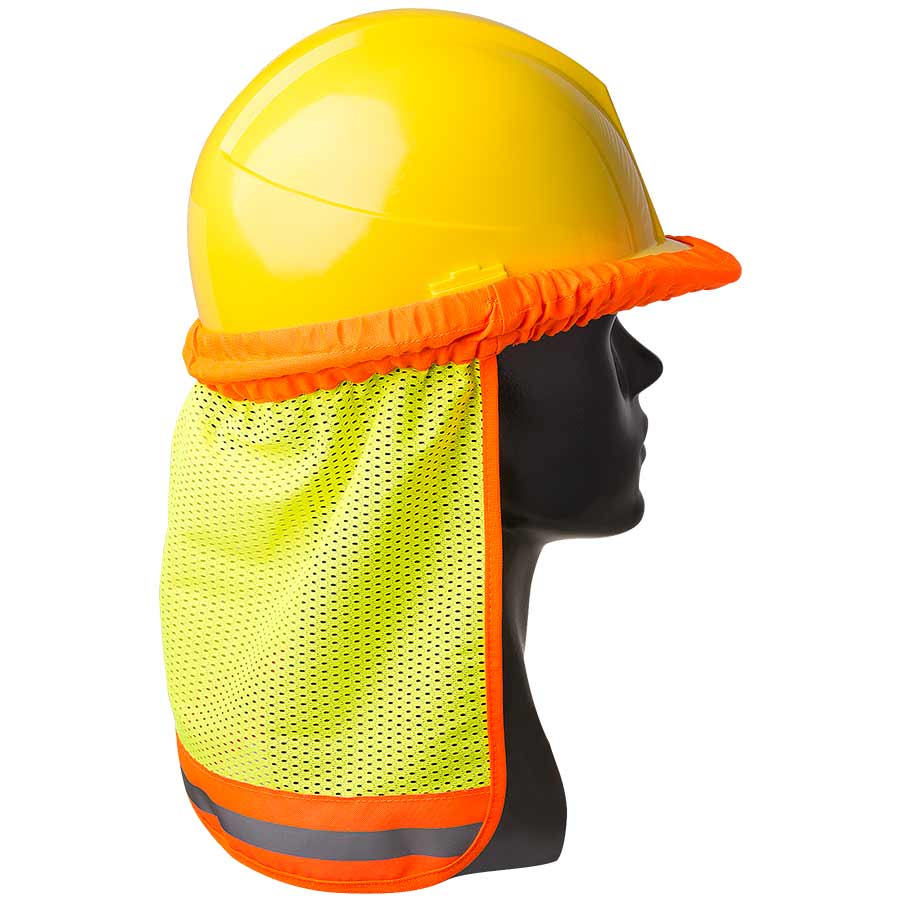
FRNS161G/F
Keep the body cool with shade that you can wear, like the HiVizGard™ Hi-Vis Green Fire Retardant Treated Neck Shade, FRNS161G/F. An elastic band attaches this self-extinguishing treated mesh fabric to most hard hats. Trimmed with silver reflective material, this HiVizGard™ neck shade also comes in lime or orange.
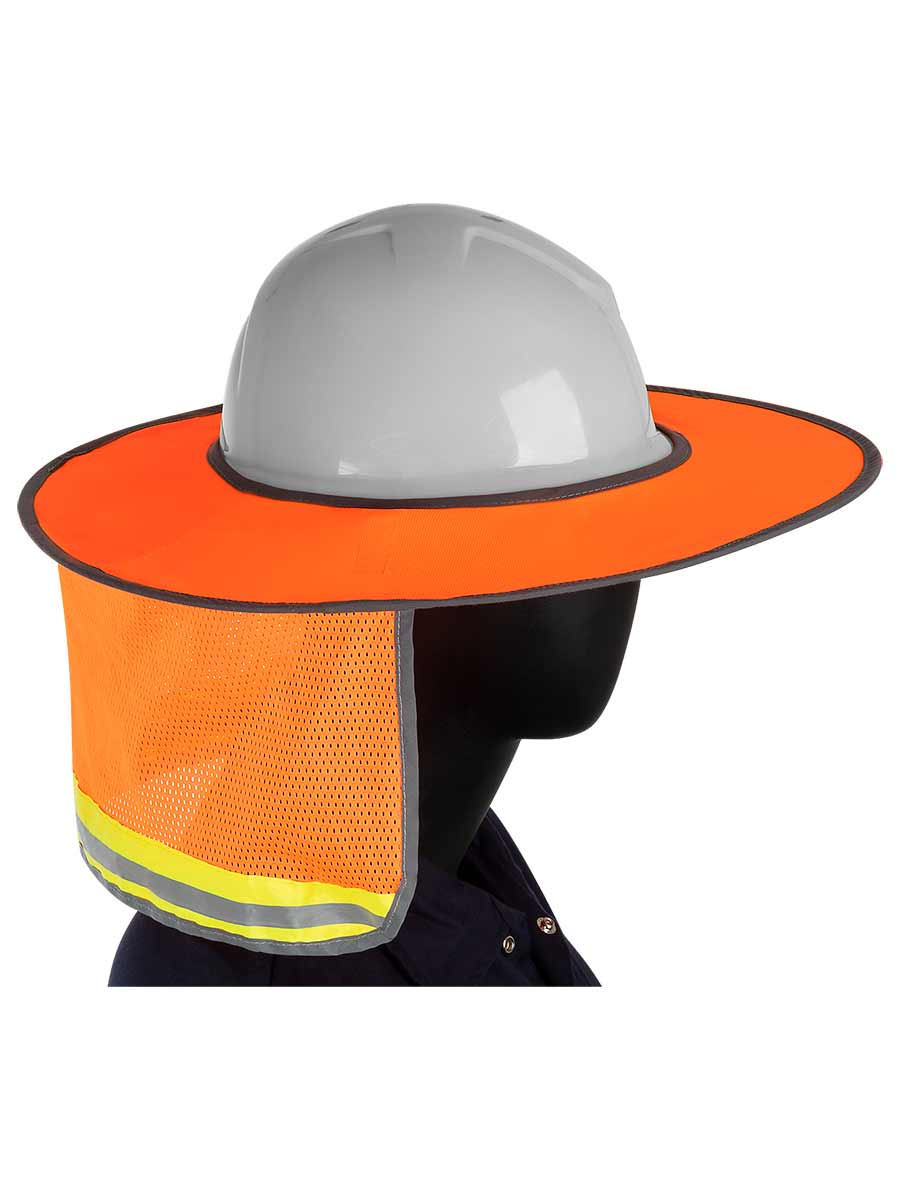
NS162F/G
Create a full brim of shade with the HiVizGard™ Orange Full Brim Neck Shade, NS162F/G. Shield your eyes from the sun as well as the back of your neck. Trimmed with silver reflective material, this full brim 100% polyester shade fits most hard hats and folds into a pouch for convenient storage. It’s also available in green or orange.
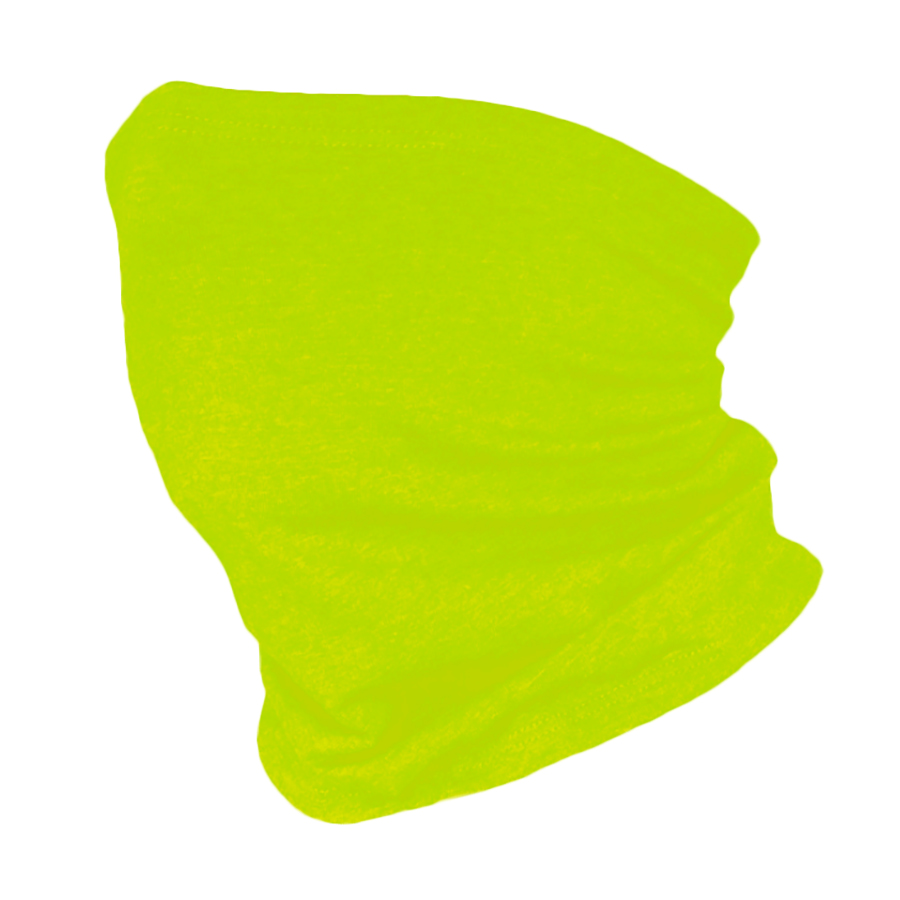
NS163G
For lightweight, multipurpose sun protection the HiVizGard™ Hi-Vis Green Neck Gaiter, NS163G, can be used to cover the neck, face, or head. Made of a single layer of cool and breathable hi-vis 100% polyester material, it’s soft and comfortable against the skin.
Materials Make a Difference
Polyester fabrics can be used to wick moisture away from the body to keep it cooler; they pull moisture toward the surface so that it can evaporate and keep the skin dry. Polyvinyl acetate, or PVA, is another material commonly used for cooling products because of its absorbency and cooling properties. Used in cooling towels, bandanas, vests and other items, it is beneficial for cooling the body temperature and also comfortable against the skin.
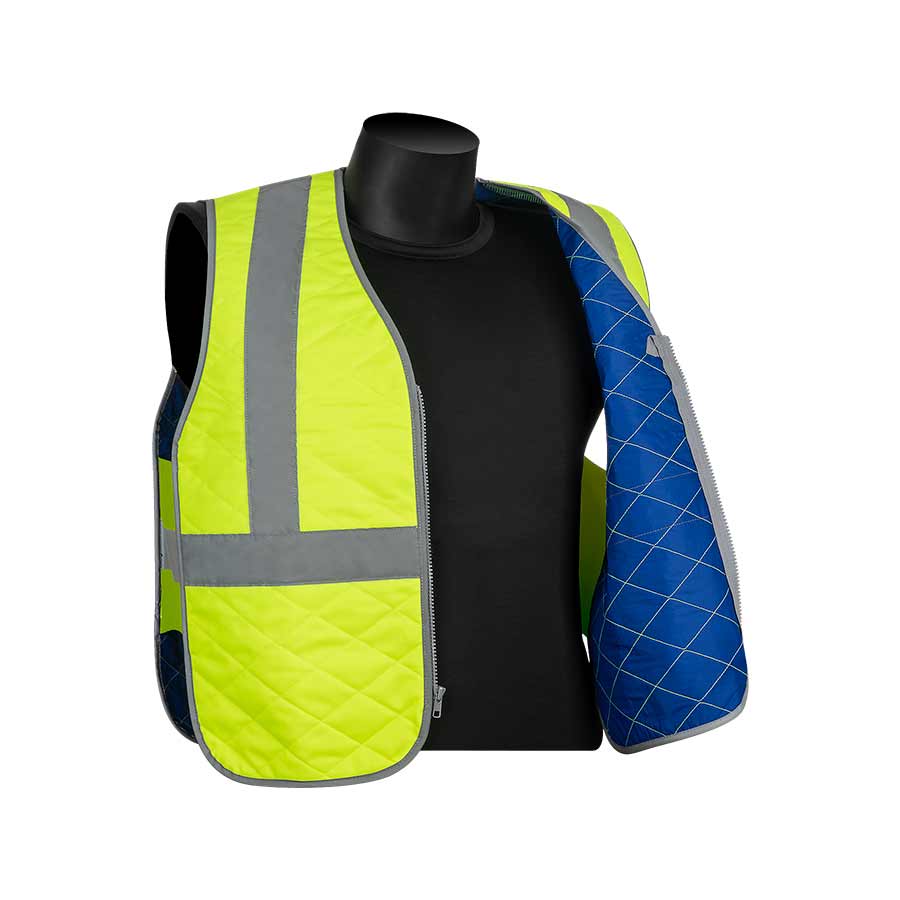
C16006GC
Keep your cool in the heat with the Class 2 HiVizGard™ Evaporative Cooling Vest, C16006GC, that combines the safety of a high visibility vest with evaporative cooling power. Activate the vest’s cooling properties by soaking it in cold water for a couple of minutes, then its evaporative properties will help you maintain a healthy body temperature. A zipper closure helps it stay in place while you work.
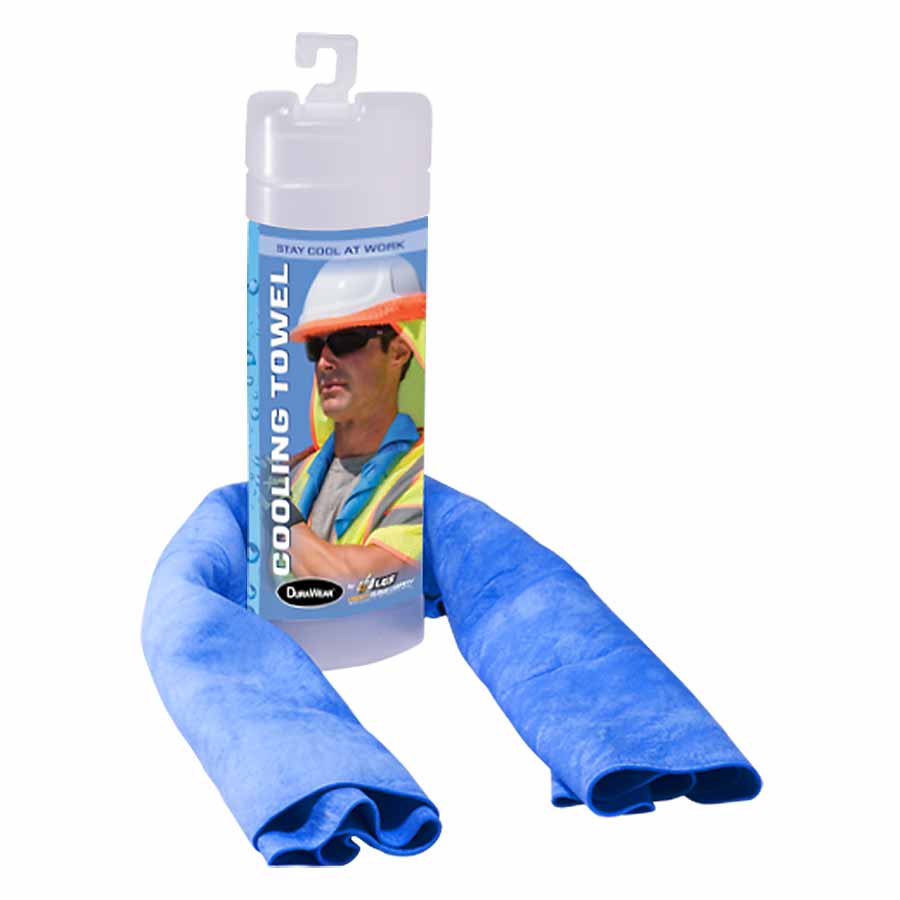
1930B
Keep a cooling towel on hand for easy relief when hot weather hits. Activate the DuraWear™ Blue Cooling Towel, 1930B, by soaking it in water and this light-weight, super-absorbent towel made of advanced PVA will provide cooling relief when wrapped around the neck or used to cool down other pulse points. Antimicrobial treated, it’s durable and machine washable.
Equip Your Team to Stay Safe in the Heat
Everyone is vulnerable to heat. In 2021, data reported by the National Safety Council indicates that 201 people died from weather related excessive heat in the U.S.
Don’t become a statistic – look out for yourself and those around you. Following effective heat related protocols on the worksite, combined with the right cooling gear from a trusted supplier, can protect workers and bring relief. Liberty Safety offers a wide range of protective gear and products to help workers keep cool during summer’s heat.


